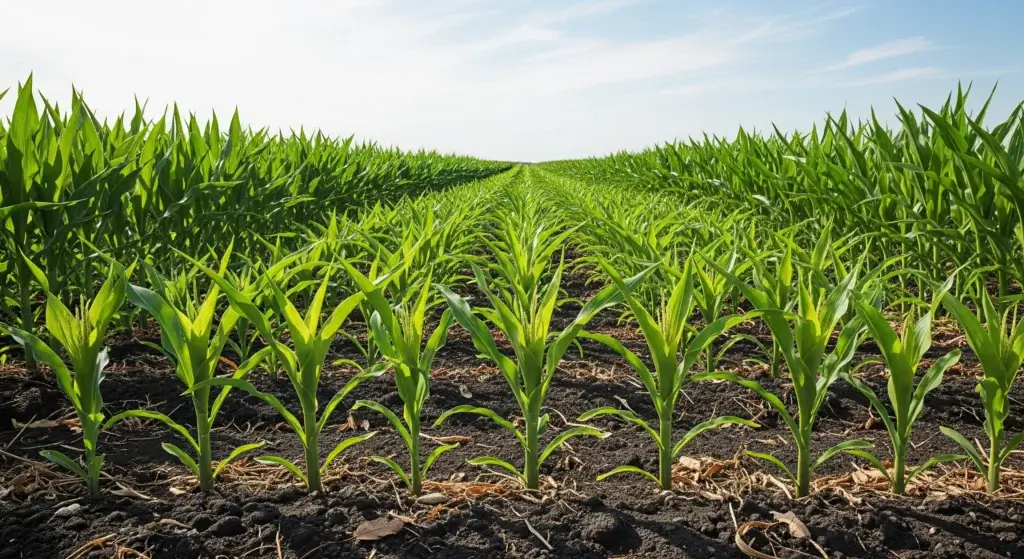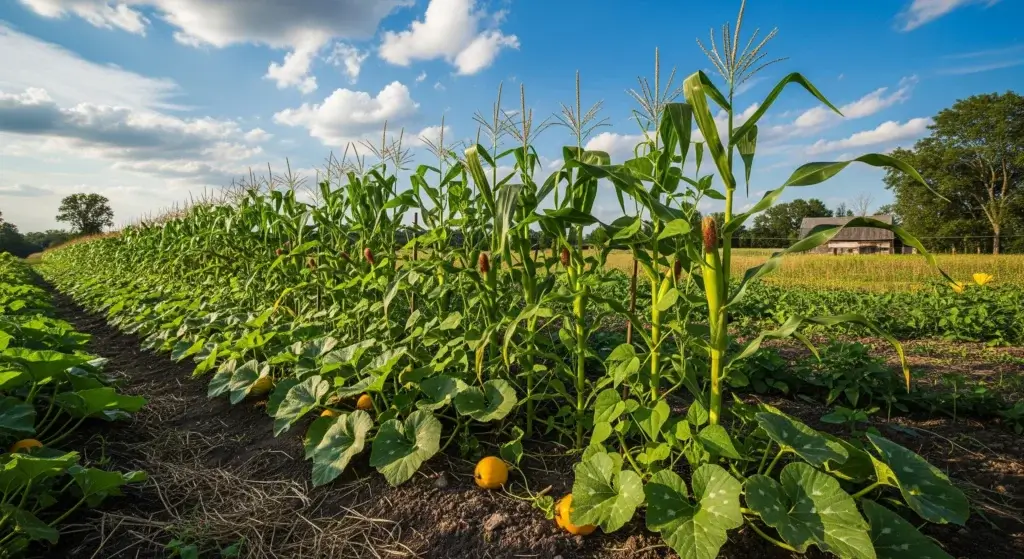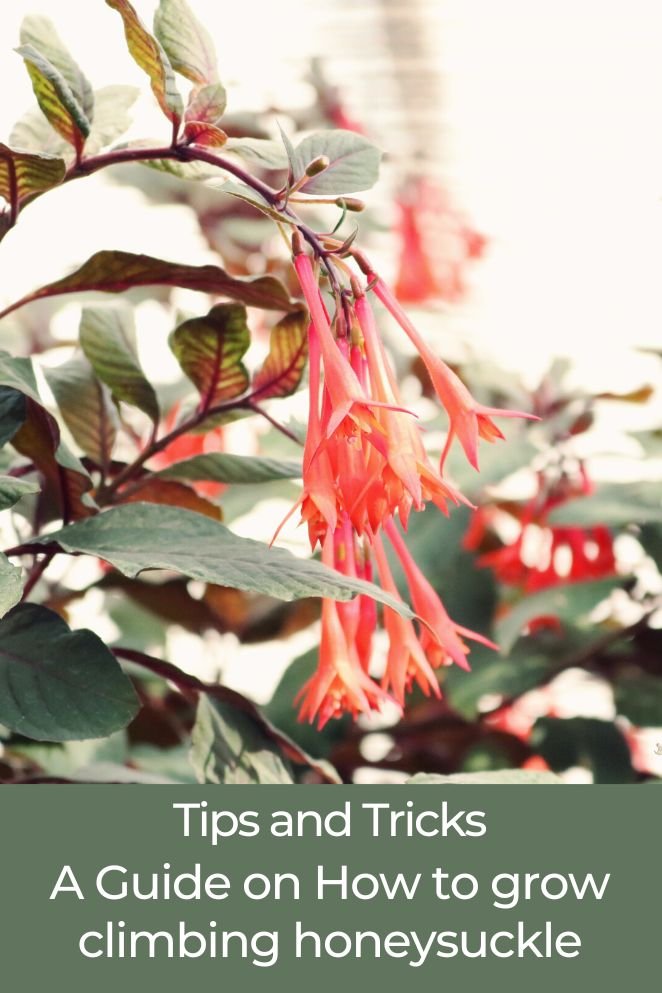
Climbing honeysuckle, with its fragrant blooms and twining vines, adds charm and beauty to any garden.
In this comprehensive guide, we explore the different types of climbing honeysuckle, provide step-by-step instructions on planting and caring for these lovely vines, and offer tips for troubleshooting common issues.
Let’s dive into the world of growing climbing honeysuckle and watch your garden flourish with these delightful plants.
Different Types of Climbing Honeysuckle
Honeysuckles are beloved flowering vines cherished for their beauty, fragrance, and ability to attract pollinators to gardens.
Here are three different types of climbing honeysuckle, each with its own unique characteristics:
- Read also: How to Grow Daphnes: A Guide to Cultivating Beautiful Shrubs
- Read also: How To Grow Epiphyllum Cacti with Success
Japanese Honeysuckle (Lonicera japonica)
Japanese Honeysuckle is renowned for its sweet fragrance and delicate white to yellow flowers.
This vigorous climber is a popular choice for gardens, where its prolific growth and charming blooms add a touch of elegance.
While prized for its aesthetic appeal, Japanese Honeysuckle can sometimes exhibit invasive tendencies in certain regions, so it’s essential to monitor its growth carefully.
Trumpet Honeysuckle (Lonicera sempervirens)
Trumpet Honeysuckle is a native species known for its stunning, trumpet-shaped flowers in vibrant shades of red.
This variety is particularly attractive to hummingbirds and butterflies, making it a delightful addition to wildlife-friendly gardens.
With its vigorous growth habit and ability to tolerate a range of soil conditions, Trumpet Honeysuckle is a versatile and low-maintenance choice for climbers.
Goldflame Honeysuckle (Lonicera x heckrottii ‘Goldflame’)
Goldflame Honeysuckle is a hybrid variety prized for its fragrant blooms, which feature a captivating blend of pink and yellow hues.
Unlike some other honeysuckle varieties, Goldflame Honeysuckle blooms persist from spring through fall, providing an extended season of beauty in the garden.
With its compact growth habit and attractive foliage, this cultivar is well-suited for trellises, fences, and arbors.
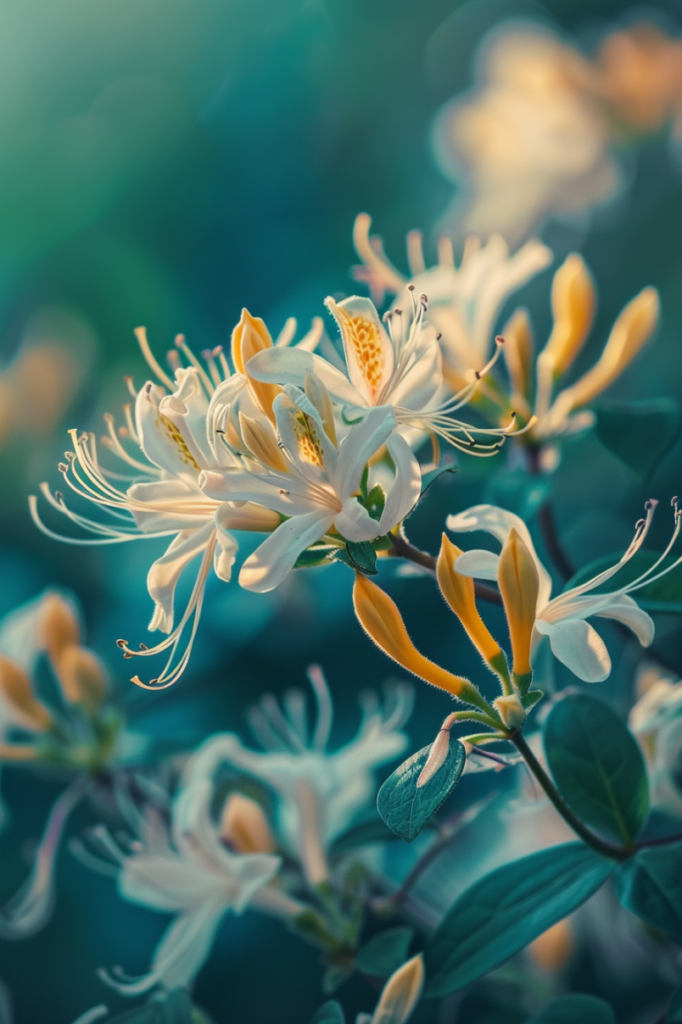
Benefits of Growing Climbing Honeysuckle
Growing climbing honeysuckle offers various benefits, making it a delightful addition to any garden.
Here are some key advantages:
Attracts pollinators
The fragrant and nectar-rich flowers of climbing honeysuckle act as a magnet for pollinators.
Hummingbirds, butterflies, and bees are drawn to these blossoms, fostering a vibrant and dynamic garden ecosystem.
This not only enhances the beauty of your garden but also plays a crucial role in supporting local pollinator populations.
Native and deer resistant
Certain varieties of climbing honeysuckle are native plants, making them well-adapted to local climates and conditions.
Additionally, these plants are often deer-resistant, reducing the likelihood of damage to your garden.
This combination of native resilience and deer resistance makes climbing honeysuckle a smart and low-maintenance choice for gardeners.
Beautiful flowers
One of the most enchanting features of climbing honeysuckle is its production of beautiful and fragrant flowers.
Available in a spectrum of colors including red, orange, yellow, and pink, these blooms add an aesthetic charm to your outdoor space while infusing the air with a delightful fragrance.
Low maintenance
Once established, climbing honeysuckle is remarkably low maintenance.
Regular watering, occasional pruning, and providing suitable support for climbing structures are generally all that’s needed to keep this plant healthy and visually appealing.
This makes it an ideal choice for both novice and experienced gardeners.
Versatile growth
The versatile nature of climbing honeysuckle allows it to be trained to grow on various structures such as arbors, trellises, walls, or pergolas.
This flexibility in growth patterns adds a layer of creativity to your landscaping design, providing vertical interest and architectural appeal to your garden.
Adaptable
Climbing honeysuckles exhibit adaptability to different light exposures and soil moisture levels.
This adaptability makes them suitable for a wide range of garden conditions, enabling you to cultivate these plants in diverse environments with confidence.
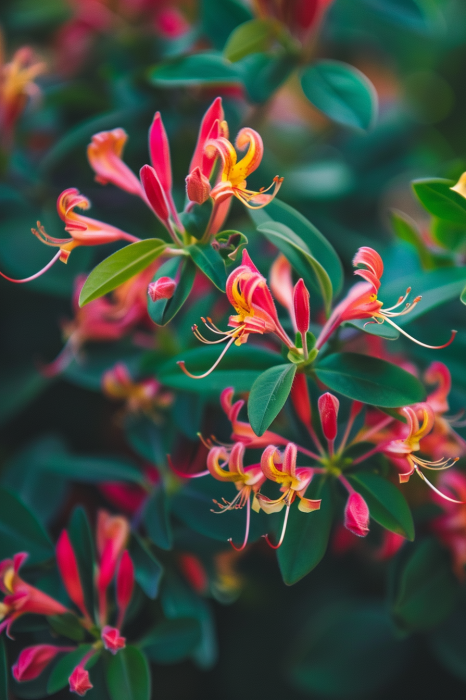
How to Plant Your Honeysuckle
When it comes to planting honeysuckle, careful consideration of timing, location, and planting techniques can significantly contribute to the success and vibrancy of these delightful climbers.
Timing
Plant your honeysuckle in early spring or fall when the weather is mild.
This timing allows the plant’s roots to establish themselves before facing the challenges of extreme temperatures.
During these seasons, the soil is generally more receptive to new plantings, providing an optimal environment for honeysuckle growth.
Location
Choosing the right location is crucial for the health and vitality of your honeysuckle.
Select a spot that receives full to partial sun exposure, ensuring that the plant gets the necessary sunlight for robust growth and prolific flowering.
Additionally, opt for well-draining soil to prevent waterlogging, which can adversely affect the plant’s roots.
Planting process
Follow these steps for a successful planting process:
Prepare the site
Dig a hole that is twice as wide as the root ball and approximately the same depth.
This extra space around the root ball provides room for the roots to spread and establish themselves in the surrounding soil.
Position the plant
Place the honeysuckle plant carefully into the prepared hole.
Ensure that the top of the root ball sits at ground level to mimic its previous planting depth.
This helps in maintaining the plant’s stability and promotes proper growth.
Backfill with soil
Gently backfill the hole with soil, tamping it down as you go to eliminate air pockets.
This ensures good soil-to-root contact, supporting the plant’s stability and nutrient absorption.
Watering
After planting, it’s crucial to water the honeysuckle thoroughly.
This helps settle the soil around the roots, providing initial hydration and promoting a healthy start for the plant.
Monitor the moisture levels in the soil, especially during the initial weeks after planting, and adjust your watering routine accordingly.

Caring for Your Honeysuckle
Ensuring the well-being of your honeysuckle involves a combination of attentive watering, strategic pruning, timely fertilizing, and addressing potential issues.
Here’s a detailed guide on caring for your honeysuckle to promote lush growth and abundant blooms:
Watering
- Keep the soil consistently moist, but avoid waterlogging, which can lead to root rot. This is especially crucial during dry spells or hot weather when the plant may experience increased water needs.
- Water at the base of the plant to minimize moisture on the foliage, reducing the risk of fungal diseases.
Pruning
- Prune your honeysuckle after flowering to maintain its desired shape and encourage new growth. Remove dead or damaged branches to enhance the plant’s overall health.
- Trim back any overly long or unruly stems to promote a tidy appearance and prevent tangling.
Fertilizing
- Apply a balanced fertilizer in early spring to provide essential nutrients for healthy growth and prolific flowering.
- Use a slow-release fertilizer or organic alternatives to ensure a steady supply of nutrients throughout the growing season.
Support structures
- If you have climbing honeysuckle varieties, provide sturdy support structures such as trellises or arbors. This helps guide their growth, preventing tangling and promoting an aesthetically pleasing display.
- Regularly check and adjust ties to avoid any constriction as the plant climbs.
Additional tips and troubleshooting
- Common problems: Keep an eye out for potential issues such as aphids, powdery mildew, or leaf spot diseases.
- Winter care: Mulch around the base of the plant in late fall to insulate the roots from freezing temperatures.
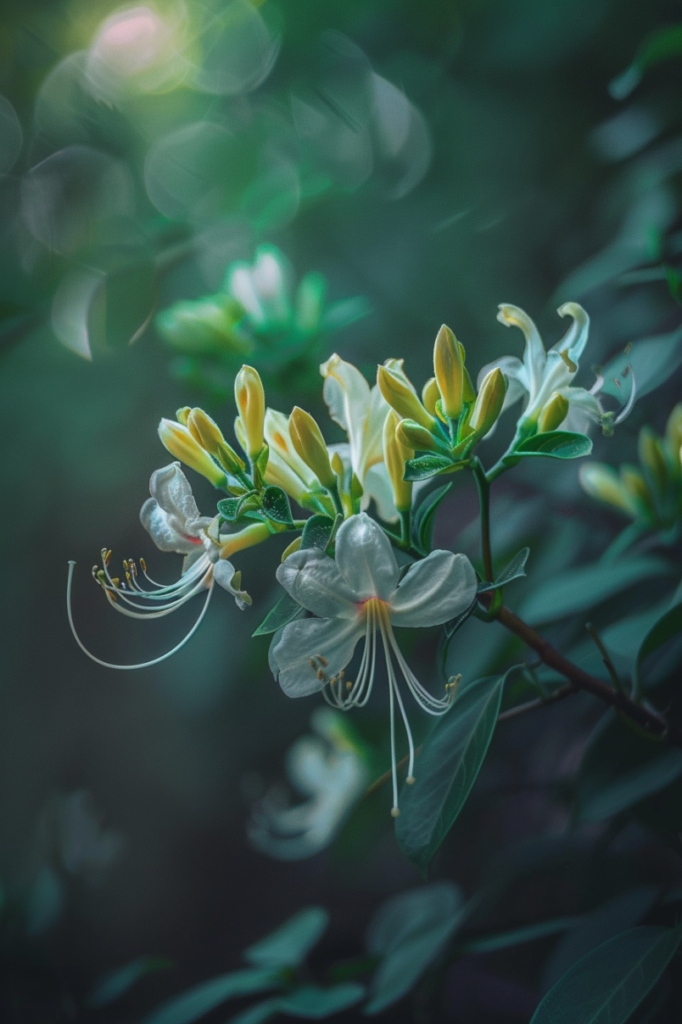
- Read also: How to Grow Quinces – A Guide to Successful Growth
- Read also: How to Grow Gerberas: A Guide for Stunning Blooms
Conclusion
Growing climbing honeysuckle can be a rewarding experience, adding beauty and fragrance to your outdoor space.
By following these planting and care tips, you can enjoy lush foliage and vibrant blooms throughout the growing season.
Embrace the charm of climbing honeysuckle in your garden and create a picturesque retreat for yourself and local wildlife.
FAQs
Yes, select a large container with good drainage for smaller varieties of climbing honeysuckle.
Depending on the variety, climbing honeysuckles can grow up to 10-20 feet in a single growing season under ideal conditions.
Yes, climbing honeysuckles are known to attract hummingbirds, butterflies, and bees with their fragrant flowers.


